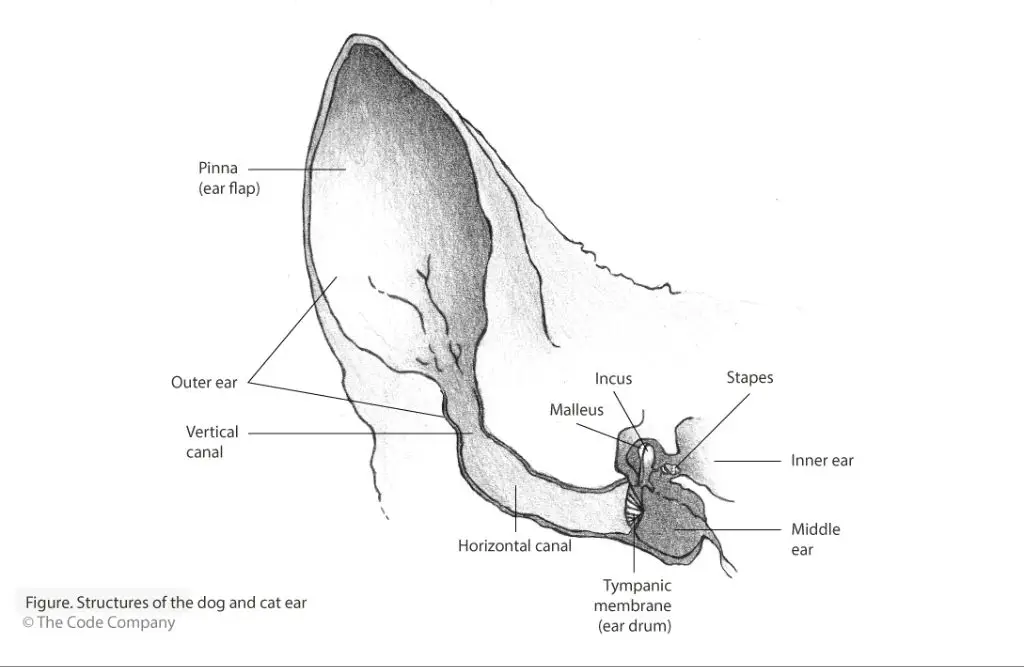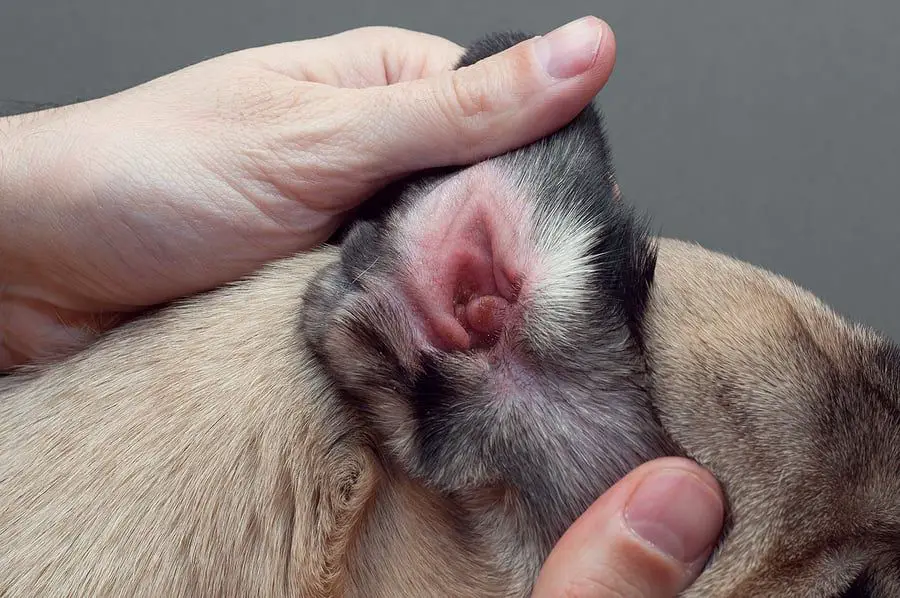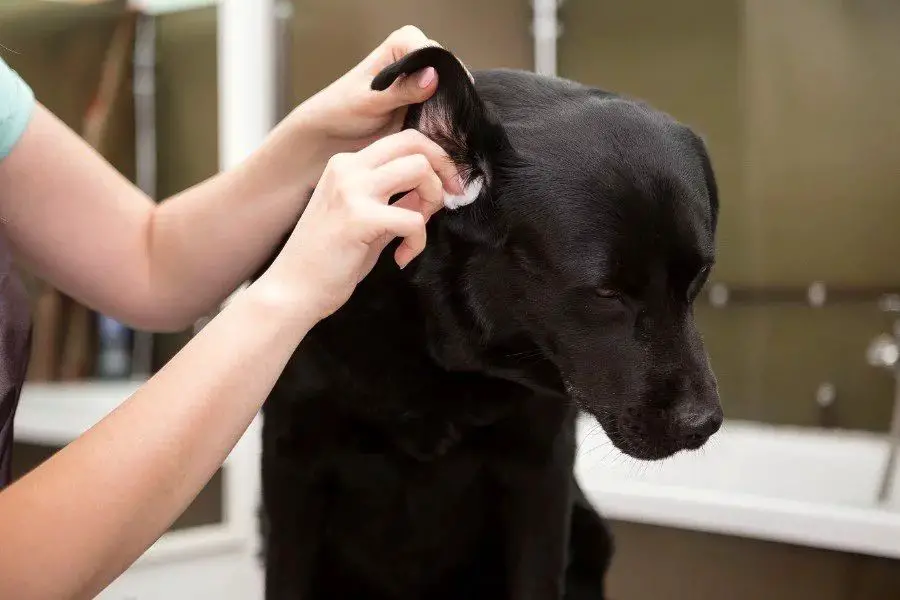Millions of Cats Suffer from Painful Ear Infections Each Year
Ear infections are one of the most common health issues affecting cats. According to the American Animal Hospital Association, over 20% of cats that visit the veterinarian have some form of otitis externa, or an infection of the outer ear. With millions of pet cats in the United States alone, this means countless cats are suffering from itchy, inflamed, and infected ears every year.
As a cat owner, it’s important to understand the causes, symptoms, and proper treatment of cat ear infections. With the right knowledge and care, many ear problems can be managed at home. However, dog ear drops should never be used on cats, as the anatomy of feline ears is quite different. Using the wrong ear medication can actually make infections worse.
This guide will cover the key differences between cat and dog ears, explain when veterinary treatment is needed, and provide tips for protecting your cat’s ears and recognizing infection early. With proper prevention and care, your feline companion’s ears can stay healthy and comfortable.
Differences Between Dog and Cat Ears
Though dogs and cats are common household pets, their ears have some important anatomical differences. Dog ears have a long ear canal that makes almost a right angle as it travels vertically down and then horizontally. Cat ears are more straight and less elongated. These shape differences affect how debris and moisture are trapped and removed.

Cats also have more sensitive hearing than dogs. While both can hear higher frequency sounds than humans, a cat’s hearing range is about 1.6 octaves greater. Their ears contain more nerves and muscles to finely control the pinna (outer flap). The ear canal amplifies sound traveling to the eardrum.
This increased sensitivity means that cats are more prone to developing ear infections and irritation. Using a product formulated for dog ears could be too harsh and irritating for a cat’s more delicate ears.
Types of Ear Drops for Dogs
There are various types of ear drops formulated specifically for dogs to treat different ear conditions. Some common active ingredients in dog ear drops include:
- Antibacterial – Ingredients like gentamicin, neomycin, polymyxin B are used to fight bacterial infections. They help stop bacterial growth and relieve inflammation and discomfort.
- Antifungal – Antifungal ear drops contain active ingredients like miconazole, clotrimazole, nystatin to combat fungal infections like yeast.
- Corticosteroids – Hydrocortisone and other corticosteroids reduce inflammation and itchiness. However, they should only be used short-term.
- Acetic Acid – Helps creates an acidic environment unsuitable for bacteria and fungi to thrive.
- Surfactants – Compounds like propylene glycol help rinse debris, dissolve ear wax, and allow the drops to penetrate deeper into the ear canal.
- Drying Agents – Isopropyl alcohol evaporates moisture to dry out the ear.
It’s important to use only ear drops formulated specifically for dogs and follow dosage instructions, as human medications can be harmful if used improperly in pets. Consult your veterinarian if you’re unsure which type of ear drops are most suitable for your dog’s condition.
Dangers of Using Dog Ear Drops on Cats
While it may be tempting to use dog ear medication on your cat to save a trip to the vet, this should be avoided. Dog ear drops often contain much higher concentrations of active ingredients than cat ear drops. What may be a safe dosage for a dog can quickly become toxic for a cat.
For example, one common active ingredient in dog ear drops is gentamicin. Gentamicin is an antibiotic used to treat bacterial infections. However, it can also cause vestibular toxicity and damage to the inner ear, especially at high doses. The concentrations found in dog ear drops may be safe for dogs but can exceed the safe dosage range for cats based on their lower body weight.
Another example is miconazole and polymyxin B, antifungal and antibiotic agents found in dog ear solutions. Too high of a dosage of these ingredients can lead to neurotoxicity, seizures, and even death in cats. Even small amounts may cause adverse reactions.
Additionally, dogs typically have a higher pH in their ear canals than cats. The formula of dog ear drops is designed with a dog’s higher pH in mind. Using a pH-adjusted solution that is too alkaline can disrupt the delicate acidic environment of a cat’s ear canal. This can allow yeast and bacteria to proliferate, worsening any infection.
With the smaller size of cats, there is much less room for error when it comes to medication dosages. It is crucial to follow dosage directions specifically tailored for cats. The higher concentrations and ingredients adjusted for dogs make their ear drops unsuitable and unsafe for feline ears.
Signs of Ear Infection in Cats
Cats with ear infections often exhibit noticeable symptoms as the infection develops. Here are some of the most common signs of an ear infection in cats that cat owners should look out for:

Head Shaking and Scratching
One of the first signs of an ear infection is vigorous head shaking and scratching at the ears. The head shaking is an attempt to relieve irritation and discomfort deep in the ear canal.
Redness and Swelling
Take a peek inside your cat’s ears – do they look red, swollen or inflamed? This could indicate an infection or inflammation. The ear canal may also appear blocked with discharge or debris.
Odor
A foul, yeasty or unpleasant odor coming from your cat’s ears is a tell-tale sign of infection. A healthy ear should not emit any odor.
Discharge
Yellow, brown or bloody discharge is common with bacterial and yeast infections. The presence of any abnormal fluid in the outer ear indicates infection.
Crusts or Scabs
Crusty buildup around or inside the outer ear canal is often a sign of advanced infection. This occurs as infected discharge accumulates and dries out.
Hair Loss
Patches of hair loss around the ear and head suggest your cat has been excessively scratching, which is a common symptom of ear discomfort.
Balance Issues
An inner ear infection can cause vestibular issues leading to loss of balance, head tilting and unusual eye movements. Seek veterinary care immediately if these symptoms arise.
Behavior Changes
If your normally docile cat becomes aggressive or reclusive, an extremely painful ear infection may be the culprit. Cats tend to hide illness, so any behavior changes warrant a trip to the vet.
When to See the Vet
Cat ear infections can range from mild to severe. In most cases, you can treat minor ear infections at home with cleaning and medication. However, there are some signs that indicate a more serious infection requiring veterinary care:
- Head shaking or scratching at ears persistently
- Redness, swelling, or discharge from the ear
- Loss of balance or trouble walking
- Bleeding or pus coming from the ear
- Bad odor from the ear
- Crusting or scabbing around the ear
- Hair loss around the ear
- Swelling or lump on the head or neck
- Changes in behavior like lethargy or loss of appetite
- Fever
- Sudden hearing loss
If your cat is showing any of these signs, it’s important to schedule a vet appointment right away. Severe ear infections can lead to ruptured eardrums, deafness, or even spread of infection to the brain if left untreated. Don’t delay in getting veterinary help if your cat’s ear infection seems to be getting worse or is causing systemic symptoms.
Caring for Cat Ear Infections at Home
While it’s always best to consult your veterinarian, there are some natural home remedies and cleaning methods that can help treat minor ear infections in cats:
Home Remedies:

-
Use a warm, damp cloth to gently wipe away any debris or discharge from the outer ear.
-
Mix apple cider vinegar and water in a 1:1 ratio and use a dropper to put 2-3 drops in the infected ear. The acetic acid can help kill bacteria and fungi.
-
Make a natural ear cleaner by mixing 1 part white vinegar with 1 part rubbing alcohol. Use a cotton ball dampened with the solution to wipe the inside of the ear.
-
Apply a small amount of coconut oil to a cotton ball and gently wipe inside the ear to soothe inflammation.
It’s important not to insert anything into the ear canal. Be very gentle when cleaning the outer ear area. Stop immediately if your cat seems distressed.
Cleaning:
To help prevent recurrence, gently wipe your cat’s ears weekly with pet ear wipes to remove dirt and debris. After swimming or bathing, dry your cat’s ears thoroughly with a soft towel or cotton ball.
Check with your vet before using any home remedies, especially if the infection seems severe. Avoid home remedies if your cat has a perforated ear drum.
Preventing Ear Infections in Cats
There are several steps cat owners can take to help prevent painful ear infections in their feline companions:
Keep ears clean and dry – Check and gently wipe your cat’s ears weekly with a soft cotton cloth or ball to remove any dirt, debris, or waxy buildup. Be sure to only clean the visible outer ear and don’t insert anything into the ear canal. After baths or swimming, gently dry your cat’s ears.
Treat allergies – Allergies to food or environmental factors like pollen or dust can cause inflammation that leads to infections. If your vet determines allergies are the root cause, medications or changes in diet or environment may be recommended.
Avoid ear irritants – Things like perfumes, grooming products, cigarette smoke, and some medications can irritate cat ears. Avoid exposing your cat to known irritants when possible.
Check for ear mites – Ear mites are a common parasite in cats that can cause itching and inflammation. If mites are present, your vet will recommend an appropriate insecticide treatment.
Monitor changes after swimming – Swimming can introduce moisture and microbes into the ears. Afterwards, keep an eye out for any signs of infection like odor, discharge, or head shaking.
By staying attentive to your cat’s ear health and following vet recommended prevention tips, you can reduce the chances of painful ear infections occurring.
Types of Ear Drops for Cats
When looking for ear drops specifically formulated for cats, there are certain ingredients to look for that are safe and effective for treating feline ear infections:
- Salicylic Acid – This helps break down wax and debris in the ear canal.
- Boric Acid – Has anti-fungal, antiseptic, and drying properties to treat yeast and bacterial infections.
- Aluminum Acetate – Helps reduce swelling and irritation.
- Lidocaine – A mild anesthetic that helps relieve pain and discomfort.
- Hydrocortisone – An anti-inflammatory that helps reduce swelling, redness, and itching.
- Tea Tree Oil – Has natural antiseptic qualities.
- Aloe Vera – Soothes inflammation and helps heal damaged skin.
Some key things to avoid in cat ear drops include antibiotics like neomycin, which can be toxic to cats. Homeopathic and natural ingredients are ideal for cats whenever possible.
Talk to your veterinarian about the right ear drop formulation and dosage for your cat’s specific infection and symptoms. Using a vet-recommended product made specifically for cats can help safely clear up ear problems.
Conclusion
While using dog ear drops on cats may seem harmless, it can actually be quite dangerous. Cats and dogs have very different physiologies, and dog ear drops are formulated specifically for dogs, not cats. The ingredients, dosage, and safety standards are tuned for canine ears, not felines.

If your cat is showing signs of an ear infection like head shaking, scratching at their ears, odor or discharge, it’s best to take them to the vet. The vet can properly diagnose the cause of infection and prescribe an ear treatment formulated specifically for cats. Trying to treat a cat ear infection with medication meant for dogs risks further irritation, infection and permanent damage.
To help prevent painful ear infections in cats, keep their ears clean and monitor for signs of infection. Never use cotton swabs or other objects to clean deep inside their ears. And be very wary of using any medication not prescribed directly by your vet. With proper care and veterinary guidance, you can help your cat avoid ear infections and keep their hearing healthy.